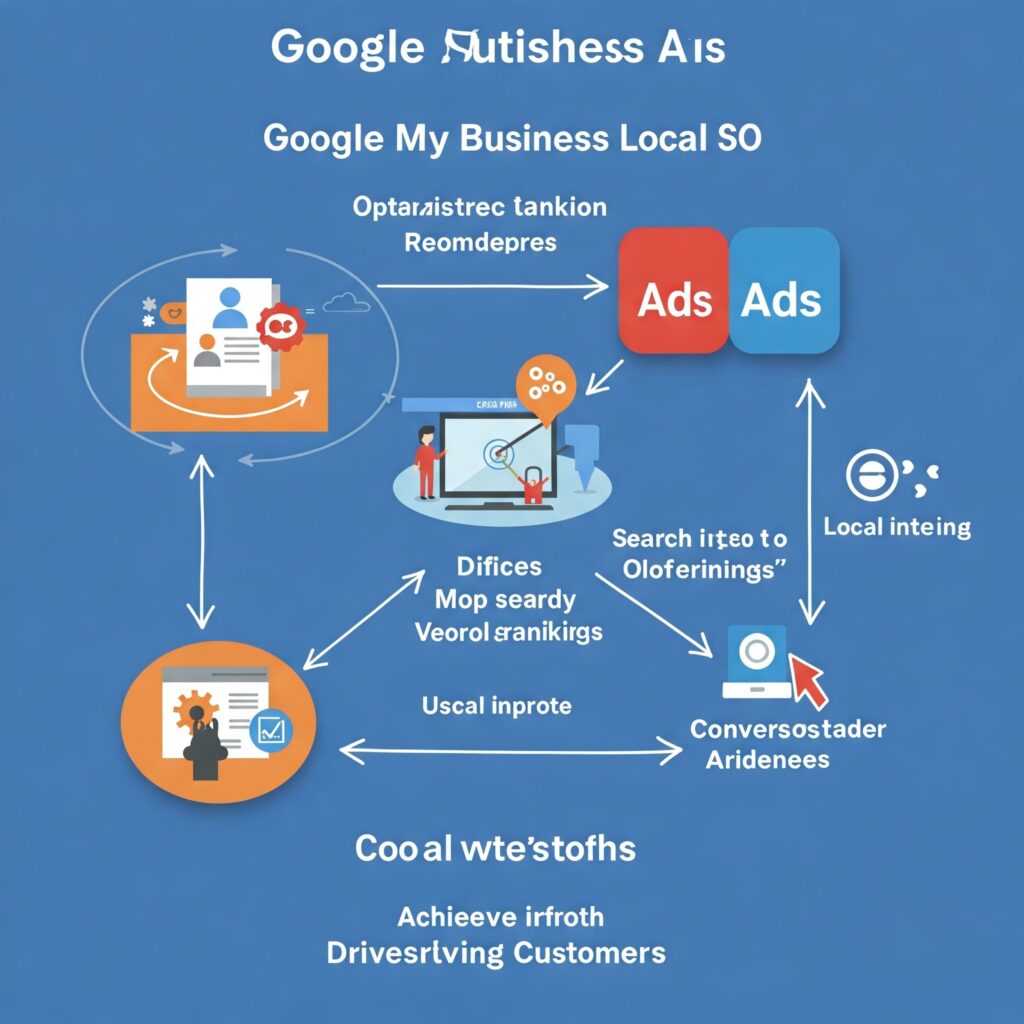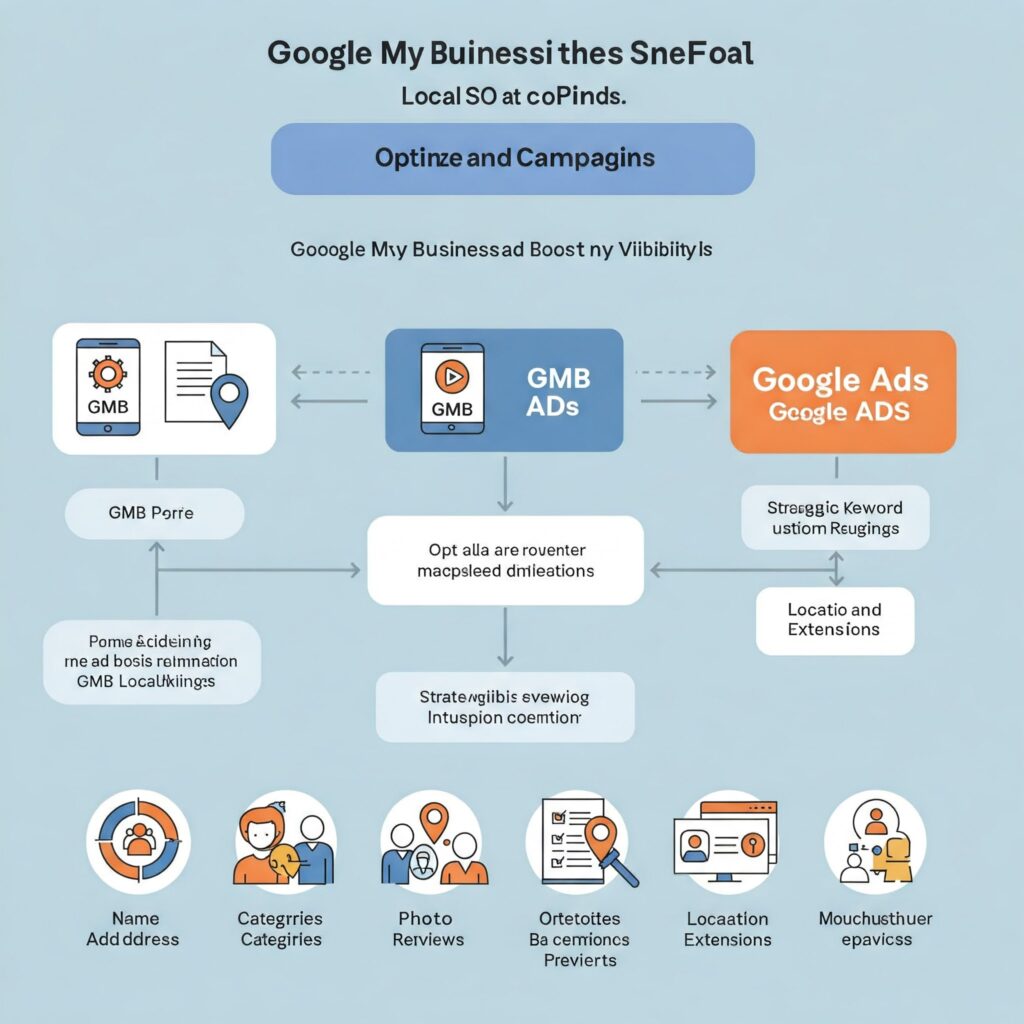Mastering Google Ads A Step-by-Step Guide
Google Ads is a powerful platform for businesses to reach potential customers and drive conversions. However, navigating its intricacies can be daunting. This guide breaks down the process into manageable steps, helping you create effective campaigns.
Step 1: Define Your Goals and Target Audience
Before diving into the platform, clarify your objectives. Are you aiming for:
- Increased website traffic?
- Lead generation?
- Sales growth?
- Brand awareness?
Simultaneously, define your target audience. Consider:
- Demographics (age, gender, location)?
- Interests and behaviors?
- Search intent (what problems are they trying to solve)?
Understanding your audience allows you to tailor your ads for maximum impact

Step 2: Keyword Research and Selection
Keywords are the foundation of your campaigns. Use tools like Google Keyword Planner, SEMrush, or Ahrefs to:
- Identify relevant keywords: Focus on keywords with high search volume and low competition.
- Group keywords into themes: Create ad groups based on related keywords.
- Choose keyword match types:
- Broad match: Reaches the widest audience but may include irrelevant searches.
- Phrase match: Targets searches containing your phrase, in the correct order.
- Exact match: Shows ads only for exact keyword matches.
- Negative keywords: Exclude irrelevant searches to refine targeting.
Step 3: Create Compelling Ad Copy
Your ad copy should be:
- Relevant: Directly address the user’s search query.
- Compelling: Highlight your unique selling proposition (USP).
- Action-oriented: Include a clear call to action (CTA).
- Character-limited: Adhere to Google Ads’ character restrictions.
- Responsive ads: use googles responsive search ads, to provide google with multiple headlines and descriptions.
Step 4: Design Effective Landing Pages
Your landing page should:
- Match the ad copy: Maintain consistency in messaging.
- Load quickly: Optimize for fast loading times.
- Be mobile-friendly: Ensure a seamless experience on all devices.
- Include a clear CTA: Guide users toward your desired action.
- Provide relevant information: Offer valuable content related to the ad.
Step 5: Set Up Your Google Ads Campaign
- Choose a campaign type:
- Search campaigns: Reach users searching on Google.
- Display campaigns: Show visual ads on websites and apps.
- Shopping campaigns: Promote products on Google Shopping.
- Video campaigns: Display video ads on YouTube.
- Performance Max Campaigns: Automate ad placement across google channels.
- Set your budget: Determine your daily or monthly spending limit.
- Choose your bidding strategy:
- Manual CPC: You set the maximum cost per click.
- Automated bidding: Google optimizes bids for your goals (e.g., maximize clicks, conversions).
- Target your location: Specify the geographic areas you want to reach.
- Schedule your ads: Choose the days and times your ads will run.
Step 6: Track Conversions and Measure Results
- Set up conversion tracking: Use Google Analytics or Google Ads conversion tracking to monitor actions like purchases, sign-ups, or form submissions.
- Analyze your data: Regularly review key metrics such as:
- Click-through rate (CTR): The percentage of users who click your ads.
- Conversion rate: The percentage of users who complete a desired action.
- Cost per conversion: The cost of acquiring a conversion.
- Quality Score: A measure of your ad’s relevance and landing page experience.
- A/B test your ads: Experiment with different ad copy, landing pages, and bidding strategies to optimize performance.
Step 7: Optimize and Refine Your Campaigns
- Adjust bids: Increase bids for high-performing keywords and decrease bids for low-performing ones.
- Refine your keyword list: Add or remove keywords based on performance data.
- Improve your ad copy: Test different headlines and descriptions to increase CTR.
- Optimize your landing pages: Enhance user experience and increase conversion rates.
- Add negative keywords: exclude unwanted search terms.
Key Considerations:
- Quality Score: A high Quality Score reduces costs and improves ad position.
- Mobile Optimization: Ensure your ads and landing pages are mobile-friendly.
- Ad Extensions: Use extensions (e.g., sitelinks, callouts) to provide additional information and improve ad visibility.
- Regular Monitoring: Continuously monitor and adjust your campaigns for optimal performance.
By following these steps and consistently optimizing your campaigns, you can leverage Google Ads to achieve your business goals and drive significant growth.
How to create google ad and google my business Account ?
It’s important to distinguish between Google Ads (paid advertising) and Google My Business (now Google Business Profile, a free business listing). Here’s a breakdown of how to set up each:
1. Creating a Google Business Profile (formerly Google My Business):
This is crucial for local SEO and helps customers find you on Google Search and Maps.
- Step 1: Go to Google Business Profile Manager:
- Visit
google.com/businessand click “Manage now.”
- Visit
- Step 2: Sign In or Create a Google Account:
- Use your existing Google account or create a new one specifically for your business.
- Step 3: Add Your Business Name:
- Type in your business name. If it already exists, claim it. If not, create a new listing.
- Step 4: Enter Your Business Address:
- Provide your accurate business address. If you have a service-area business, you can specify your service areas.
- Step 5: Choose Your Business Category:
- Select the primary category that best describes your business. This is essential for search relevance.
- Step 6: Add Contact Information:
- Enter your phone number and website URL.
- Step 7: Verify Your Business:
- Google will verify your business to ensure accuracy. Common verification methods include:
- Postcard by mail: Google sends a postcard with a verification code to your business address.
- Phone or email: Some businesses may qualify for instant verification via phone or email.
- Video Recording: Google might ask for a video recording of your business.
- Google will verify your business to ensure accuracy. Common verification methods include:
- Step 8: Complete Your Profile:
- Add photos, business hours, a description, and other relevant details.
- Keep your information up to date.
- Step 9: Regularly Manage your profile:
- Respond to reviews, add posts, and update your business information.
How to create google campaign
Creating a Google Ads Campaign:
This involves paid advertising to reach a wider audience.
- Step 1: Create a Google Ads Account:
- Go to
ads.google.comand click “Start Now.” - Sign in with your Google account.
- Go to
- Step 2: Choose Your Campaign Goal:
- Select your primary objective, such as sales, leads, website traffic, brand awareness, or app promotion.
- Step 3: Select Your Campaign Type:
- Choose the type of campaign that aligns with your goal:
- Search campaigns: Text ads on Google Search results.
- Display campaigns: Visual ads on websites and apps.
- Shopping campaigns: Product listings on Google Shopping.
- Video campaigns: Video ads on YouTube.
- Performance Max: Automates ads across all of Google’s channels.
- Choose the type of campaign that aligns with your goal:
- Step 4: Set Your Budget and Bidding Strategy:
- Determine your daily or monthly budget.
- Choose a bidding strategy, such as manual CPC or automated bidding.
- Step 5: Define Your Target Audience:
- Specify your target location, language, and other demographic details.
- Step 6: Keyword Research (for Search Campaigns):
- Identify relevant keywords that your target audience is likely to use.
- Step 7: Create Your Ads:
- Write compelling ad copy that includes relevant keywords and a clear call to action.
- Step 8: Design Your Landing Page:
- Create a relevant and user-friendly landing page that aligns with your ad.
- Step 9: Set Up Conversion Tracking:
- Track valuable actions, such as purchases or sign-ups, to measure your campaign’s effectiveness.
- Step 10: Launch and Monitor Your Campaign:
- Review your campaign performance regularly and make adjustments as needed.
Key Differences:
- Google Business Profile: Free listing for local businesses to improve visibility on Google Search and Maps.
- Google Ads: Paid advertising platform to reach a broader audience through various ad formats.
By using both Google Business Profile and Google Ads, you can significantly enhance your online presence and reach potential customers.
what are the bid strategies?
n Google Ads, “bid strategies” refer to the methods you use to determine how much you’re willing to pay for a click or impression on your ads. These strategies are crucial because they directly impact your ad’s visibility, cost, and overall campaign performance.
Here’s a breakdown of what bid strategies are and the main types:
Understanding Bid Strategies:
- Purpose:
- Bid strategies help you optimize your ad spending to achieve your specific marketing goals, such as driving website traffic, generating leads, or increasing sales.
- They dictate how Google Ads sets your bids in the ad auction, which determines your ad’s position and whether it’s shown to users.
- Types:
- Google Ads offers both manual and automated bidding strategies.
Key Types of Bid Strategies:
- Manual CPC (Cost-Per-Click) Bidding:
- You manually set the maximum amount you’re willing to pay for each click on your ad.
- This gives you maximum control but requires careful monitoring and adjustments.
- Automated Bidding:
- Google’s systems automatically adjust your bids to help you achieve your campaign goals.
- These strategies use machine learning and real-time data to optimize bids.
- Examples of automated bidding strategies include:
- Maximize Clicks: Aims to get you as many clicks as possible within your budget.
- Maximize Conversions: Tries to get you the most conversions possible within your budget.
- Maximize Conversion Value: Focuses on maximizing the value of your conversions.
- Target CPA (Cost Per Action): Sets bids to achieve your target cost per conversion.
- Target ROAS (Return On Ad Spend): Sets bids to achieve your target return on ad spend.
- Target Impression Share: Sets bids to achieve your desired impression share.
- Smart Bidding:
- This is a subset of automated bidding that uses Google’s advanced machine learning to optimize for conversions or conversion value in each auction.
- It considers a wide range of signals, such as device, location, and time of day, to make more informed bidding decisions.
Why Bid Strategies Matter:
- Efficiency:
- The right bid strategy can help you get the most out of your advertising budget.
- Optimization:
- Automated strategies can save you time and effort by optimizing bids in real-time.
- Goal Alignment:
- Different strategies are designed to achieve different goals, so choosing the right one is essential for campaign success.
In essence, bid strategies are a critical part of managing Google Ads campaigns. They allow advertisers to control how their money is spent, and allow google to use its AI to help advertisers reach their goals.Sources and related content

